LOGIC PRO X, FL STUDIO, CUBASE and More..
We know that it’s tough to decide which software is the best for making beats. That’s why we’ve pulled together a list of the best DAWs for producing. Let me make a disclaimer. This isn’t actually a list of the best DAWs for producing. I’ve compiled a list of what I believe to be the most popular DAWs among producers. I gathered this information through personal experiences and research. Before going through our Best DAWs countdown, you should consider a few things first.
DAW is short for Digital Audio Workstation. You can use a DAW to record, mix, master, edit, and produce audio files. If you plan on making music with your computer, you’re definitely going to need one of these.
All of these factors are very important to think about before choosing a DAW. You want a DAW that complements your workflow and allows you to get your ideas out as fast as humanly possible. Alright! That’s enough talking! Let’s get into the list!
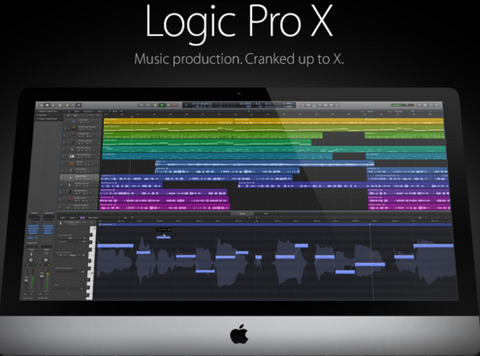
Logic is my favorite DAW (really because it’s the only one I use). Apple revamped it’s Logicseries last year with the 10th release in the franchise. Logic Pro X comes with a whopping 50 GB sound library of instruments and effects. The program is available for Mac computers only.
New features in this installation of Logic include the Drum Machine Designer, Drum Kit Designer, Enhanced Piano Roll Editor, and Region Based Automation. The easy export options Logic provides lets users bounce tracks to Soundcloud, Final Cut Pro, Airdrop, iTunes, or Mail Drop.
The addition of Logic Remote allows users to control the program from their iPad as well. Mainstage 3 app is available for those who are looking for a live-performance companion for Logic Pro X. Mainstage 3 transforms your Mac into a highly efficient music making powerhouse. It allows for more processing power by freeing up your memory to focus on music tasks. You can also customize your layout by adding knobs, meters, faders, buttons, etc. This is a must have for live performances.
With a price point of $200, Logic Pro X is a great DAW to start making beats.
Famous Users: Justice League, Metro Boomin, illmind, Kenny Luck, Gwen Stefani, Kay Gee, Rick Rubin, The Roots, Coldplay, and Dave Pensado
The Good: Logic Pro X is really cheap considering how much comes with this DAW. Its a powerful DAW that’s great for making most styles of music. If you’re looking for a well rounded DAW, Logic Pro X may be right for you.
The Bad: Logic Pro X doesn’t support 32-bit plugins. That means you are going to have to download 3rd party software to use plugins like Sylenth.

FL Studio is BY FAR the most cracked (illegally downloaded) DAW on this list. It has grown to be known as the “Trap” DAW, after producers like Lex Luger highlighted the simplicity of producing in FL Studio. If you are into beat making videos, you’ve probably seen Lex Luger in the lab making a beat in 10-15 minutes. His rapid production style shows how quickly you can get ideas out with FL Studio.
Everyone who uses FL Studio seems to love its piano roll. Grossbeat is a FL Studio plugin that’s designed for time and volume manipulation effects. This is one of the most unique plugins to come bundled with a DAW. FL Studio comes with 30 instruments and several effects. FL Studio is compatible with 32-bit and 64-bit plugins.
The update to FL Studio is focused on sound design. Its Bass Drum plugin is a percussion synthesizer with sample layering. Image Line has provided producers a new option for designing their own kicks. The Effector plugin comes with 12 performance oriented effects: Distortion, Lo-Fi bit reduction, Flanging, Phasing, Filter (low/high pass), Delay, Reverb, Stereo Panning & Binaural Effect, Gating, Granulizer, Vocal Formant and Ring Modulation.
FL Studio is available in three versions: Fruity Edition ($99), Producer Edition ($199), and the signature bundle ($299).
Famous Users: Mike Will Made It, Lex Luger, Sledgren, Southside, TM88, Tarentino, Sonny Digital, Johnny Juliano, Jahlil Beats, Cardiak, Hit-Boy, Avicii, Deadmau5, Wondagurl, Afrojack, 9th Wonder, and Boi-1da.
The Good: FL Studio makes it easy to “bass bend”. You can throw any WAV sample in FL Studio and easily apply a glide to it. If you are looking for a DAW that extremely efficient, FL Studio is worth exploring. FL Studio is also affordable compared to other major DAWs.
The Bad: FL Studio is not available on Mac operating systems. If you have an Apple computer, you are going to have to bootcamp it to run the Image Line program. It’s also rumored that the audio quality of FL Studio is slightly worse than the other major DAWs. That’s just a rumor though. I don’t have any data to support that claim.

Cubase comes with 3,000 instrument presets and 1,500 effects presets in the Pro version. This music creation program is available on Windows and Mac platforms. The newest version of Cubase comes with the redesigned MixConsole and Chord Track. Chord Track is really useful for those producers wanting to quickly map out a harmonic progression.
The Cubase update includes several effect plugins: Quadrafuzz v2, VST Bass Amp, Multiband Envelope Shaper, Multiband Expander, Deesser, Multiband Compressor, and Tuner.
Cubase is available in Cubase Elements ($99.99), Cubase Artist Full Version ($299.99), and Cubase Pro Full Version ($549.99)
Famous Users: Superstar O, Cirkut, Hector Delgado, Jake Gosling, M-Phazes, Tiesto, and Zedd
The Good: Steinberg (the company that makes Cubase) has lots software and hardware that’s designed to work with Cubase. If you are looking for a DAW to use as a compositional tool, you should consider Cubase.
The Bad: Cubase isn’t Steinberg’s only DAW. That means they’re not completely focused on making Cubase the best DAW out.

Garageband is the only free (well technically free for Mac users) DAW on the list. Garageband is aimed towards the beginner musicians. It comes bundled with several guitar and piano lessons for users to learn the basics. The program really is a baby version of Logic Pro X. It comes bundled with instruments, effects, and loops.
Like it’s older brother, Logic, GarageBand is incompatible with 32-bit plugins so say goodbye to Sylenth. You can shell out 5 bucks for additional GarageBand content designed to work with the app. Extra sounds, drummers, loops, and Learn To Play music lessons are at your disposal.
Famous Users: T-Pain, Kate Nash, Fred Durst, Fallout Boy, Nine Inch Nails, Seal
The Good: GarageBand is pretty easy to use overall. If you’re new to making beats, GarageBand is a good option to start learning the ropes. It comes already installed on MacBooks and iMacs so there’s no extra software to buy.
The Bad: GarageBand has major restrictions. If you are an advanced beatmaker, GarageBand is probably too basic for you. The older versions of GarageBand can’t open projects created with the newest version. If you’re a PC user, you won’t be able to use GarageBand on your computer.

Pro Tools has been known as the “industry standard” DAW for several years now. Musicians tend to use Pro Tools for recording, mixing, and mastering, but it can be used for producing too! The program is compatible with Windows and Mac computers.
Pro Tools shines the most when it comes to recording and editing audio. If you like to use real instruments on your beats, Pro Tools may be the best solution for you. Its Loop Recording and Quickpunch features let you assemble the ideal recording from multiple takes.
Pro Tools is still a legitimate option if you don’t use live instruments that often. The DAW comes with a variety of virtual synths, drums, instruments, and loops. Pro Tools supports 256 tracks at once for you monster users out there!
Avid is developing the online functionality of Pro Tools. This year they are introducing a cloud based collaboration platform where users can work together via internet. Avid also included an in app marketplace in Pro Tools 12 for users to buy additional content. This is definitely something you’re going to want to keep your eye on.
Pro Tools 12 with upgrade plan is available for $899.
Famous Users: Dave Pensado, Bangladesh, Jake One, Harry Fraud, JR Rotem, Zaytoven
The Good: Pro Tools is what a lot of industry people use for recording, mixing, and mastering. Developing skills in Pro Tools will definitely help you down the road as long as you’re still making music. If you are looking to engineer and produce, Pro Tools may be the best option for you.
The Bad: Pro Tools only supports 64 bit AAX VSTs and plugins so make sure your favorite programs are compatible before making the switch.

Maschine is both hardware and software for making beats on Windows and Mac computers. It comes with an 8 GB sound library and Native Instruments products like Massive, Reaktor Prism, Scarbee Mark 1, and Solid Bus Comp.
Maschine is more flexible than your typical DAW. You can load Maschine as a plugin in another DAW for sampling or drum programming. Even though this is an impressive feature, I personally haven’t been able to use it with Logic Pro X because it crashes every time 🙁 However, I do like Maschine’s Drum Synth. It’s easy to use and helpful for creating custom drum sounds.
For those of you who make beats on the go, you can sketch ideas in the iMaschine app and transfer them to your DAW later. Its pretty useful as it comes with a voice recorder, sampler, and sequencer.
Maschine is one of the best DAWs for sampling. Its audio editing features allow for users to trim and chop samples very quickly. There are several options for assigning audio clips to the Maschine pads. If you like sampling and/or finger drumming, you definitely need to explore Maschine.
Maschine is available in 3 versions: Maschine ($599), Maschine Studio ($799), and Maschine Mikro ($349). Even though there are 3 options available, the software is the same for each one. The hardware controller is the thing that varies.

Maschine ($349)
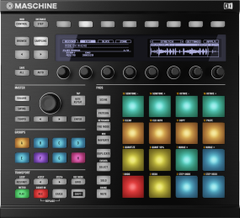
Maschine ($599)
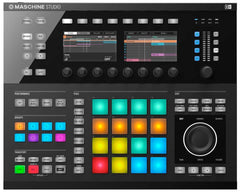
Maschine Studio ($799)
Famous Users: Sledgren, Lex Luger, Bryan Michael Cox, El-P, Jeremy Ellis, Ski Beatz, F Major,
The Good: Maschine comes with an outstanding library of drums and percussion sounds. I believe Maschine has the best stock drum sounds to ever come with a DAW. These sounds are usable and inspiring! If you like physically playing your drum patterns, you should consider Maschine as an option.
The Bad: I feel like Maschine is tedious to use as a DAW. Whenever I try to make a beat using Maschine, I feel so lost. I struggle to figure out how to sequence my beat properly in the program. Some producers have success with Maschine though so don’t let my experiences dictate how you feel about it.

Ableton Live is another great DAW for making beats on Windows and Mac platforms. It comes fully loaded with 4000 audio loops, 390 drum kits, 5 synthesizers, and 3 samplers. Ableton Live features signature drum collections from Daniel Miller, Soniccouture, Flatpack and Puremagnetik.
The newest version of Ableton boasts some great features for capturing ideas quickly. It includes a “melody to MIDI” and a “drum to MIDI” function that allows you to record live instruments and convert that input to MIDI information.
The Ableton update places all sounds in an easy to navigate view. You will be able to quickly locate your VSTs, instruments, packs, and effects while you’re making beats.
Like Maschine, Ableton Live is designed to work with its own hardware controller, Push. The Push control pad gives producers the tools necessary to create and sequence beats on the fly. The controller comes with 64 pads and is highly customizable. Push was designed by the creative minds at Akai Professional.
You can easily hook up your MIDI controller to Ableton and go to work. It’s compatible with most controllers and automatically maps controls to the most popular ones.
Ableton Live comes in three versions: Lite ($99), Standard ($499), and Suite ($749).
Famous Users: El-P, Ski Beatz, ID Labs, Daft Punk, Diplo, M83
The Good: Ableton Live is great for live performances as the name suggests. If you want a DAW made to work with a specific MIDI controller, take a closer look at Ableton Live.
The Bad: The development of the audio hardware Push may have taken away from the development of Ableton Live. The program is also on the expensive side compared to other DAWs.

Propellerhead’s Reason is available on Windows and Mac platforms. The DAW comes with 9 instruments and 25 effects. The stock effects include compressor, phaser, delay, reverb, distortion, chorus, and flanger. If the stock instruments aren’t enough for you, you can get some Rack Extensions from the Propellerhead Store. Hopefully, those Reason Refills are enough to hold you over because the program does not support VSTs or Audio Units.
Reason is a unique DAW in that once you go Reason you don’t go back. Its lack of plugin support and distinct workflow encourages users to completely delve into Reason’s creation process. You’re either gonna love this DAW or hate it.
Reason is available in two versions: Reason Essentials ($99) and Reason 8 ($399).
Famous Users: DJ Mustard, DJ Lucky Date, Cid Rim, The Runners, Scott Storch, David Banner
The Good: Reason makes the process of sampling easier by providing users with a variety of audio editing options. I can’t think of another DAW that compares to Reason’s virtual rack design either. If most of your beats are sampled or created with live instruments, Reason could be the best fit for you.
The Bad: Reason has major restrictions against using third party plugins within the software. You’re pretty much left with Rack Extensions as your only option for getting new VSTs into the program. Reason does not have video support or surround mixing. Reason doesn’t have a crossfade feature for blending overlapping audio clips.
Honorable Mention DAWs that didn’t make the list: Mixcraft, Sony Creative Software Acid, MuTools MuLab, Steinberg Nuendo, Magix Samplitude Pro X, and Bitwig Studio.
In conclusion, you’re going to have to decide which DAW fits your production needs. The best DAW for you heavily depends on the computer you have. Be sure to try a demo of the DAW you’re interested in before you buy it.
There’s no substitution for being a great musician. You’re going to have to have great music making skills to make great music using any program. You need to commit to a DAW and learn all of its features to get the most out of it.
Cognitive video About “Best DAW for Beginners” from our Friend: Alanzhelon Consordini
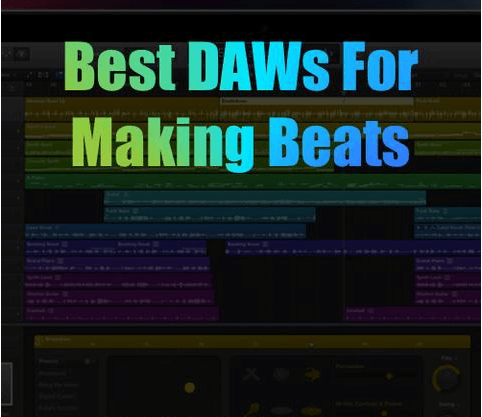

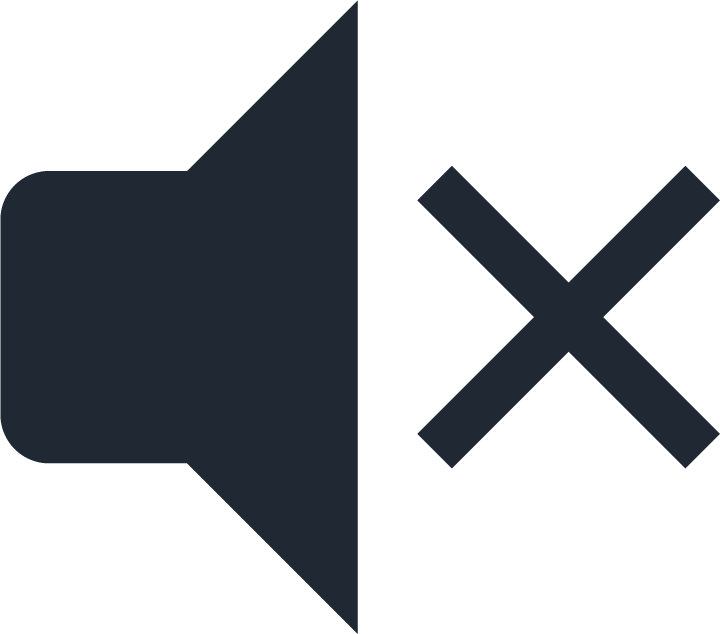

 100% Secure Shopping
100% Secure Shopping